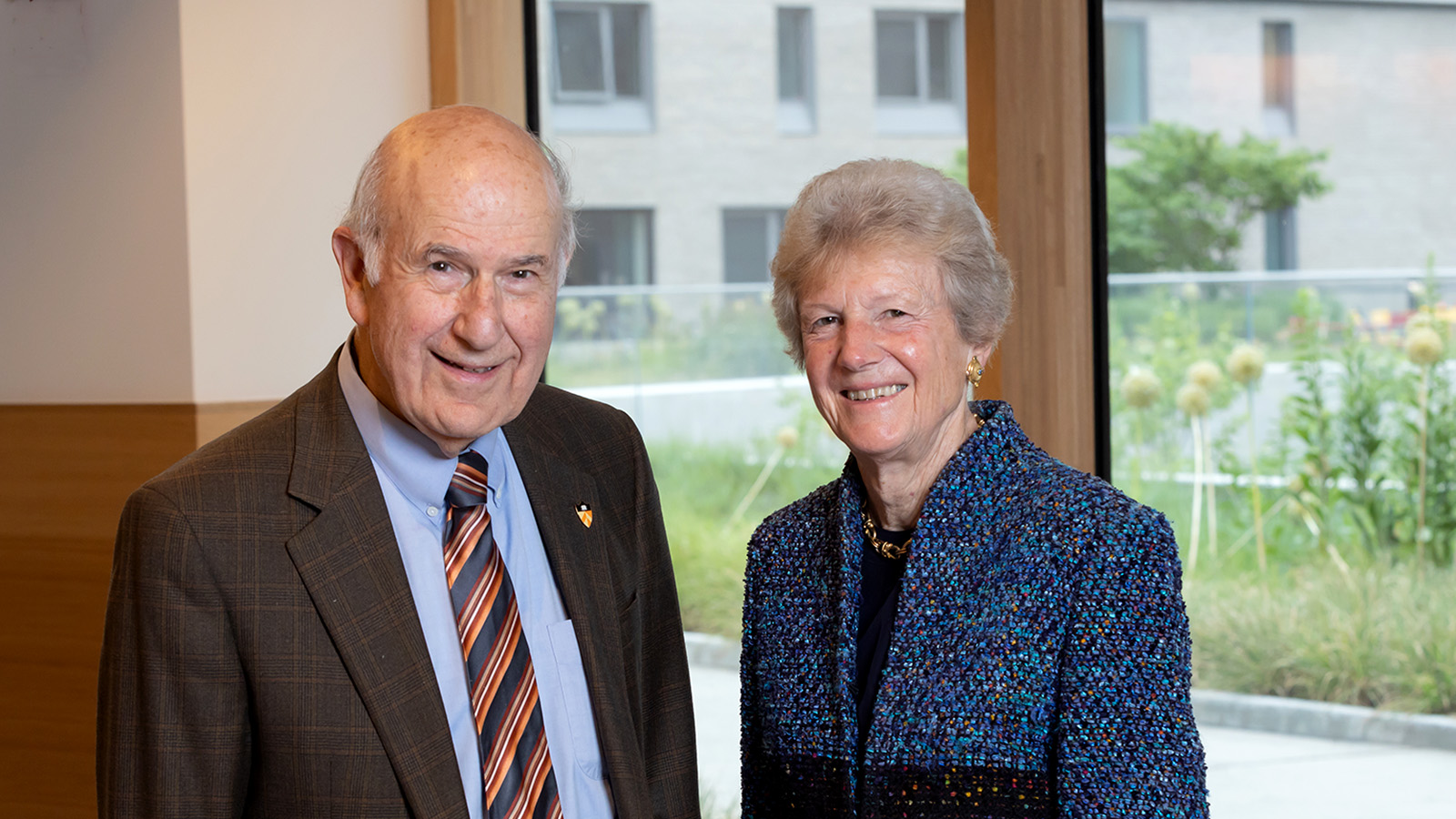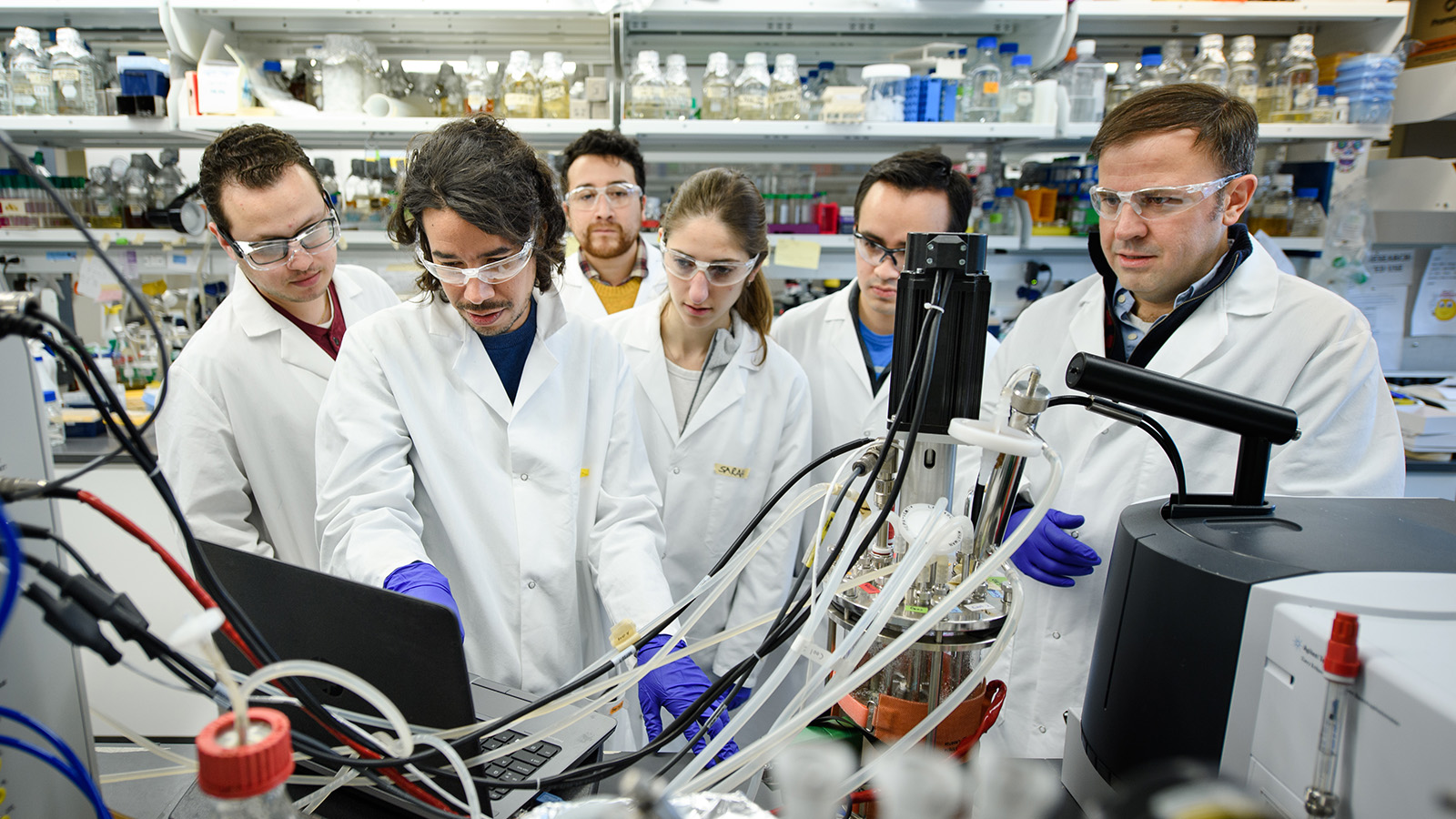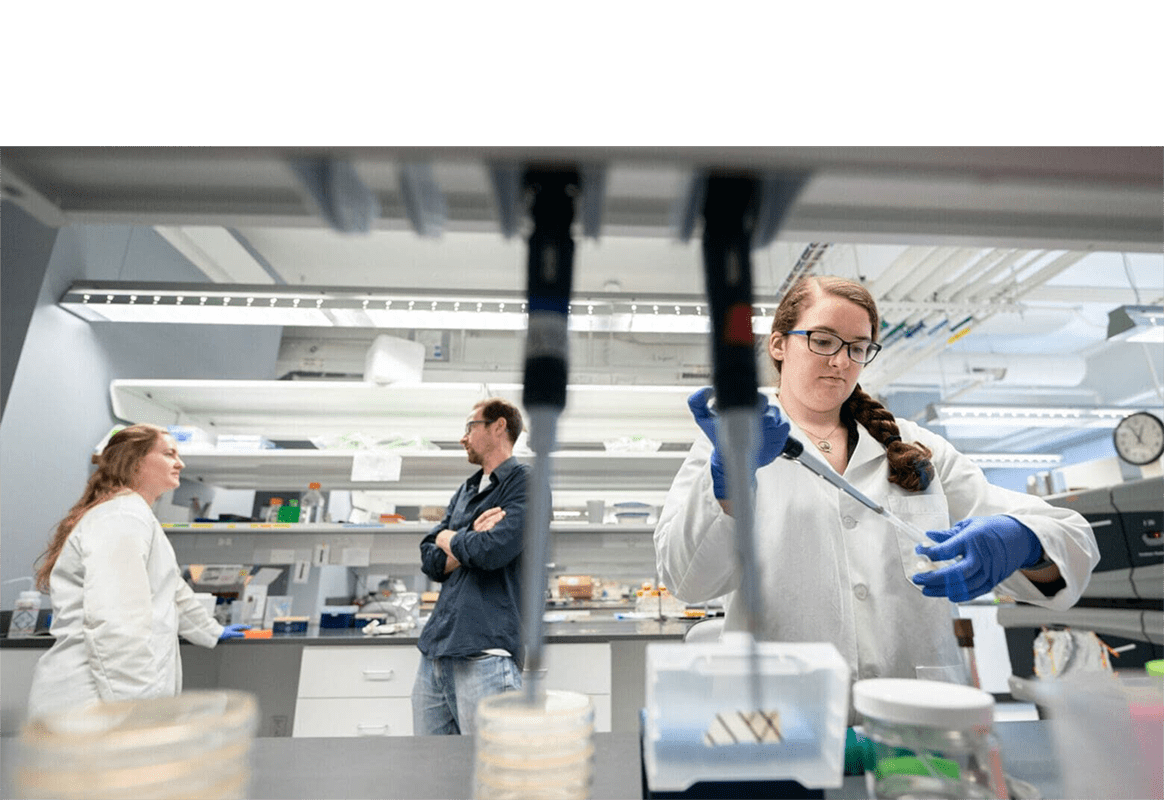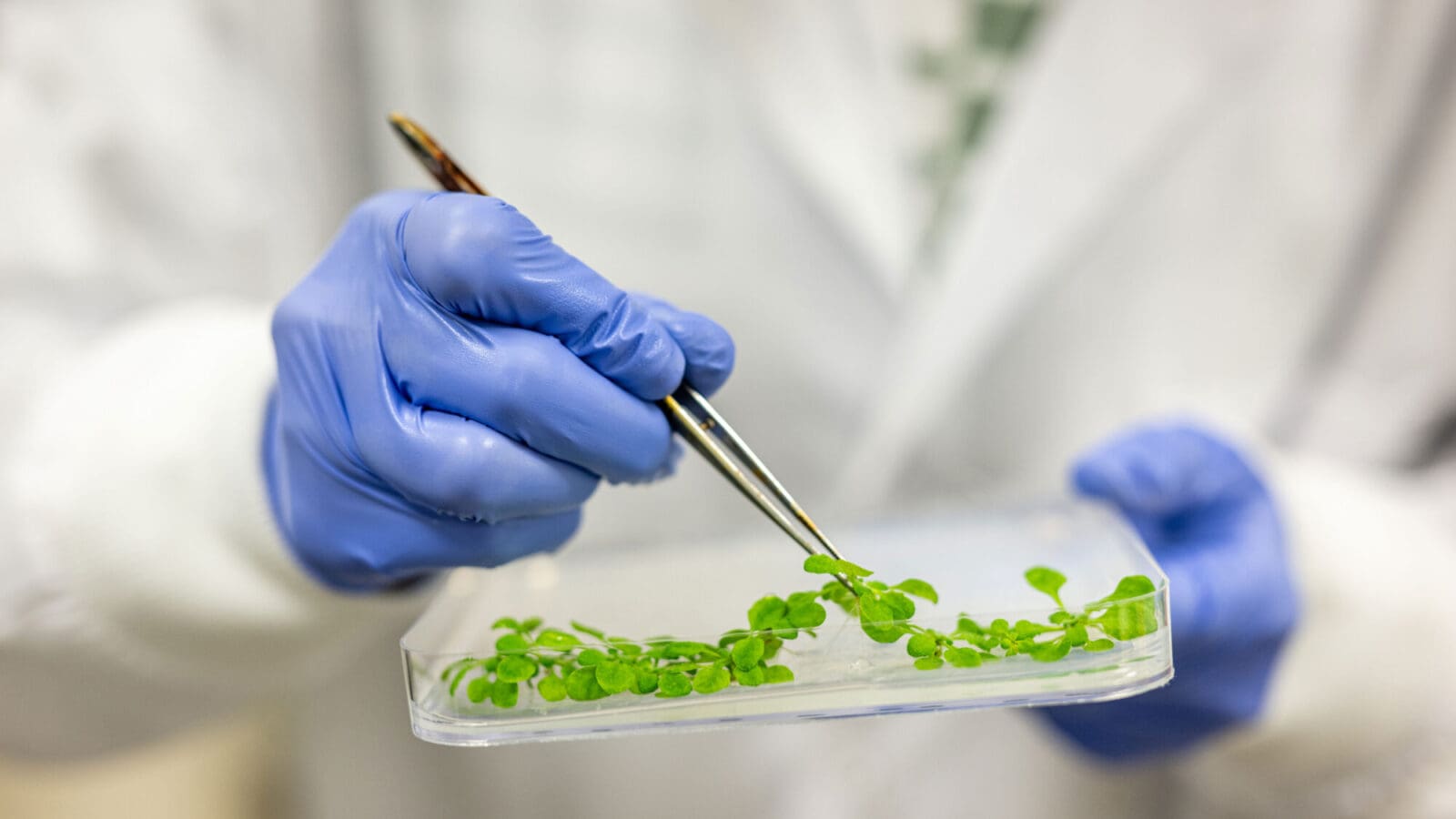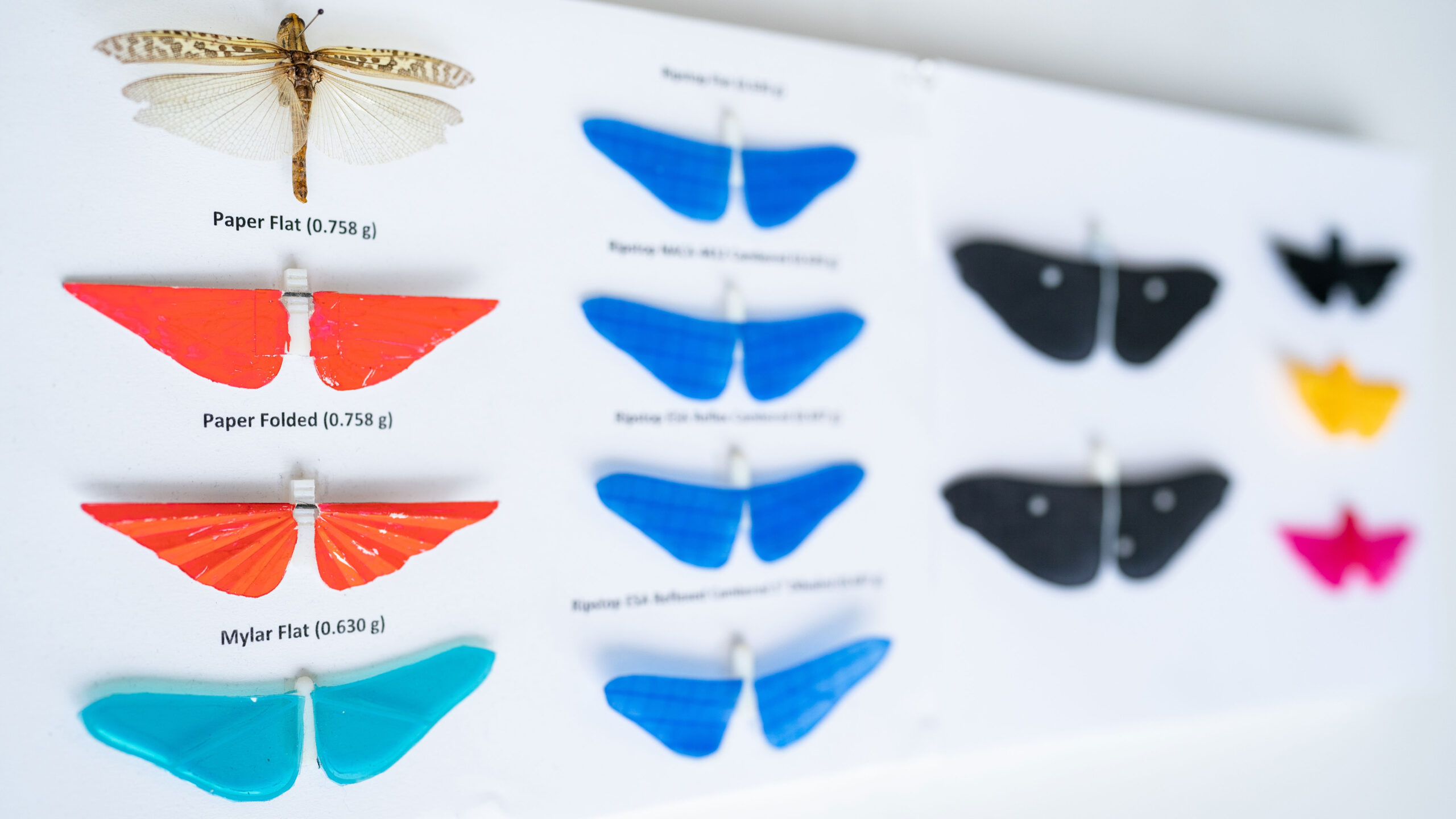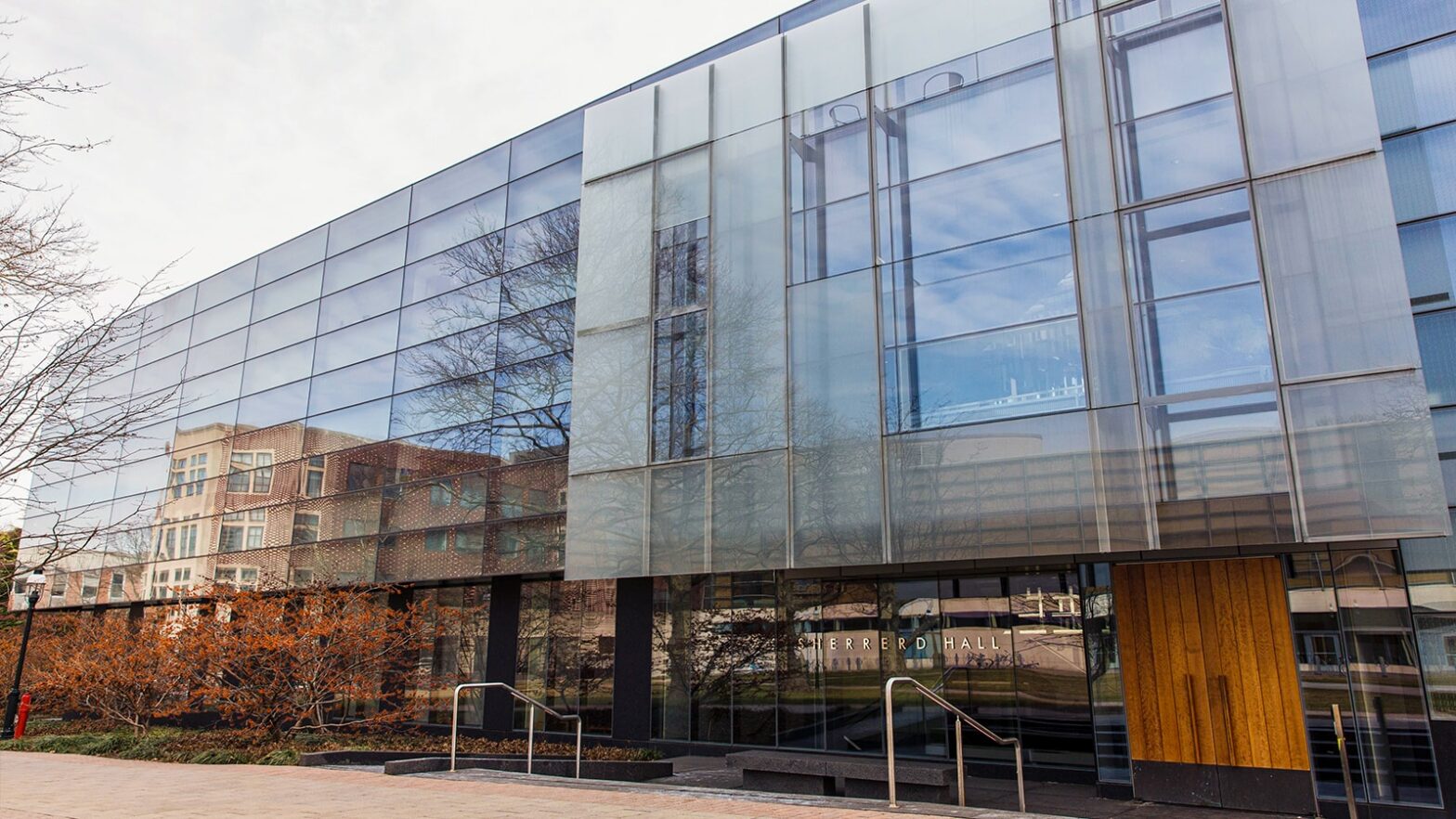
Innovation funds support advances in bioengineering, machine learning and materials science
By
on
The projects number among 20 awardees of annual research grants awarded for 2022. Rodney Priestley, Princeton’s Pomeroy and Betty Perry Smith Professor of Chemical and Biological Engineering and vice dean for innovation, and postdoctoral research associate Xiaohui Xu are working to develop the fire-retardant spray, a finely tuned mixture containing polydopamine, which is similar to the proteins that help mussels cling to wood and stone. The mixture could someday be sprayed onto building materials and vegetation to prevent the spread of fire.
Many fire-retardant materials currently used in furniture and building insulation release hazardous gasses during combustion. Ammonium polyphosphate is a safer alternative, but breaks down quickly when exposed to moisture in the air. Priestley and Xu are investigating a method to combine ammonium polyphosphate with polydopamine-coated silica (a major component of sand), and spray it onto flammable materials to create a multi-layered fire barrier. An advantage of this fire-retardant material is that it can firmly adhere to the target substrate, which increases the potential for long-term protection in the environment.
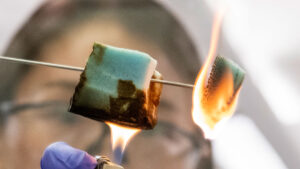
Xu has tested a polydopamine-coated silica spray on cotton and foam, and found that it forms a carbon char barrier when exposed to fire.
“This is the first step. In the next step we are going to mix these nanoparticles with ammonium polyphosphate, another environmentally friendly flame-retardant material. We want to combine these to further improve the fire-retardant properties,” said Xu, a Presidential Postdoctoral Research Fellow who has also led research on a solar water purification device inspired by pufferfish.
Xu and Priestley’s work is supported by the Yang Family Fund and the David T. Wilkinson Innovation Fund.
Princeton Engineering’s Innovation Research Grants are funded by Princeton alumni, parents and other donors. This year’s awards, which total more than $2 million, include:
Project X Fund
Project X funding enables Princeton engineering faculty members to pursue exploratory research geared toward “creativity, tinkering and risk-taking.” The fund is made possible by G. Lynn Shostack in honor of her late husband David Gardner, a 1969 Princeton graduate. Project X grants were awarded to:
Craig Arnold, the Susan Dod Brown Professor of Mechanical and Aerospace Engineering and director of the Princeton Institute for the Science and Technology of Materials, for the project “Laser-based 3-D metal printing by direct in situ smelting”;
Jonathan Conway, an assistant professor of chemical and biological engineering, for the project “Engineering auxin plant hormone-degrading bacteria for improved plant growth and productivity”;
Emily Davidson, an assistant professor of chemical and biological engineering, for the project “Flow-reactor coupled direct ink writing for patterning of non-equilibrium microstructures”;
Yasaman Ghasempour, an assistant professor of electrical and computer engineering, for the project “Securing underwater acoustic communications against terrestrial adversaries”;
Felix Heide, an assistant professor of computer science, for the project “Turning walls into mirrors: beyond diffuse non-line-of-sight imaging”;
Kyle Jamieson, a professor of computer science, for the project “Large-scale wireless cross-link learning”;
Chi Jin, an assistant professor of electrical and computer engineering, for the project “Demystifying partial observability in reinforcement learning”;
Ning Lin, an associate professor of civil and environmental engineering, and graduate student Kairui Feng for the project “Assessing hurricane-blackout-heatwave compound hazard risk and resilience for the United States”;
Olga Russakovsky, an assistant professor of computer science, and lecturer Ruth Fong, for the project “Toward complete interpretability of computer vision models”;
Michael Webb, an assistant professor of chemical and biological engineering, and Hang Zhang, a graduate student in chemistry, for the project “Molecularly informed investigation of contact charging between insulating polymer surfaces”;
and Mark Zondlo, a professor of civil and environmental engineering, with mid-infrared engineer Lei Tao and graduate student Nathan Li, for the project “Mid-infrared photonic devices for on-chip optical gas sensing.”
Helen Shipley Hunt Fund
Made possible by Helen Shipley Hunt, who earned a master’s degree in mathematics from Princeton in 1971, this fund supports research aimed at improving human health, with a focus on applied projects. Shipley Hunt funds were awarded to:
Edgar Choueiri, a professor of mechanical and aerospace engineering, for the project “Advanced hearing aid for isolating sound sources using a head-steered ambisonics beam”;
and A. James Link, a professor of chemical and biological engineering, for the project “Engineering hairpin peptides as a protein-protein interaction inhibitors.”
Forese, Wilke and O’Brien Family Funds
The Forese, Wilke and O’Brien families each established funds to support innovative research in human health.
These funds were awarded to Mark Brynildsen, an associate professor of chemical and biological engineering, for the project “Bacterial Jekyll and Hyde: investigating the impacts of ploidy on heteroresistance.”
J. Insley Blair Pyne Fund
Established in memory of physics and electrical engineering professor and Princeton graduate J. Insley Blair Pyne, this fund supports research at the intersection of engineering and neuroscience. Blair Pyne funds were awarded to:
Adam Finkelstein, a professor of computer science, and Mala Murthy, a professor of neuroscience, for the project “How we recognize individual voices: a cross-species study”;
Peter Ramadge, the Gordon Y.S. Wu Professor of Engineering and a professor of electrical and computer engineering, and Uri Hasson, a professor of psychology and neuroscience, for the project “Using machine learning to model and analyze human language and communication;
and Hakan Tureci, an associate professor of electrical and computer engineering, for the project “Finding signal in the noise: mouse-brain-inspired edge processor for spectroscopic sensors.”
Additional Engineering Research Funds
Additional funds for innovative engineering research include a fund supported by multiple anonymous donors, as well as the James Mi *91 Research Innovation Fund for Data Science.
The first fund was awarded to Luc Deike, an assistant professor of mechanical and aerospace engineering and the High Meadows Environmental Institute, for the project “High-fidelity simulations of dense swarms of evaporating droplets in turbulence.”
The James Mi *91 Research Innovation Fund for Data Science was awarded to Bartolomeo Stellato, an assistant professor of operations research and financial engineering, for the project “Learning task-specific optimizers for real-time autonomous systems.”
